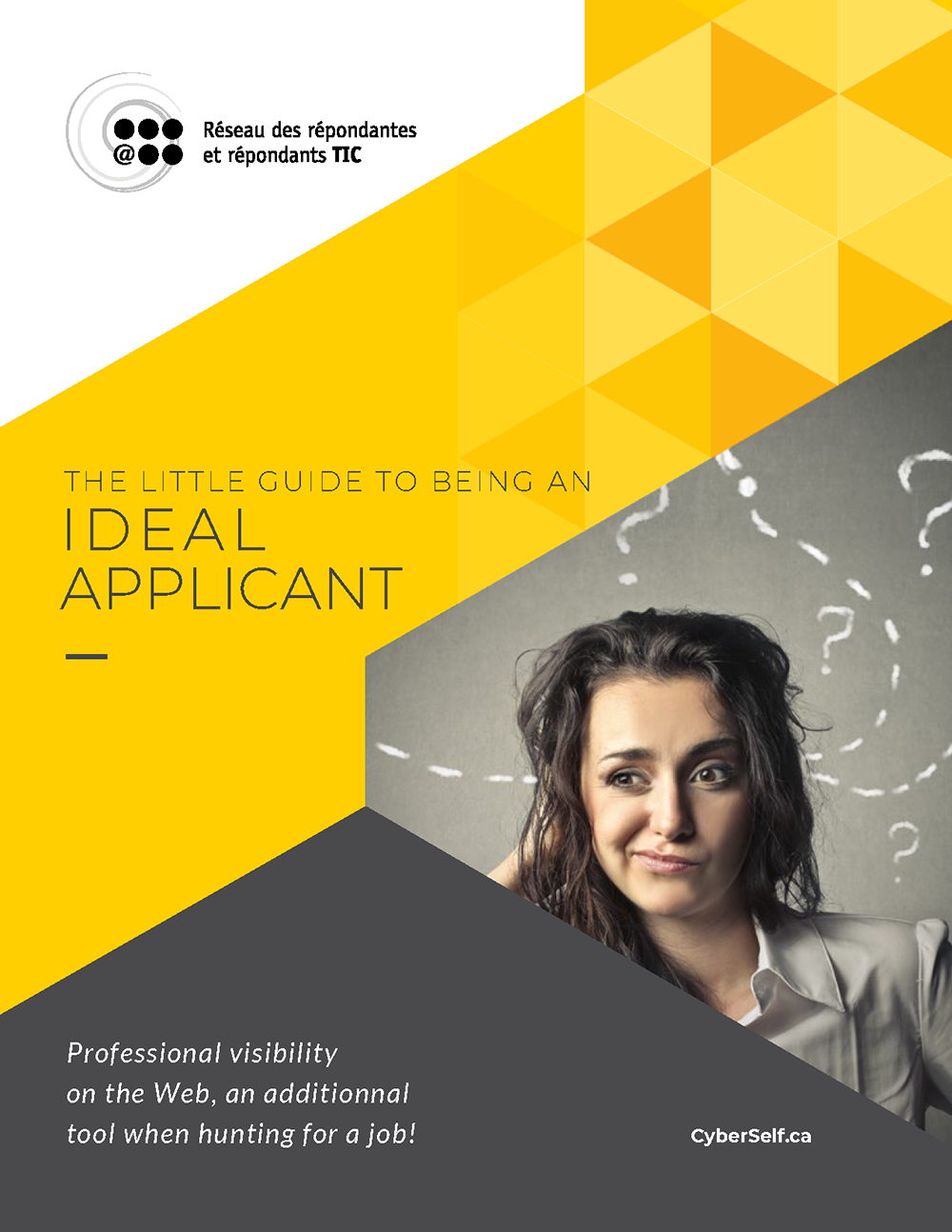The Little Guide to Being an Ideal Applicant
Important !
As of fall 2022, the cyberself.ca website is no longer accessible. To learn more about digital citizenship, consult The Little Guide to Being an Ideal Applicant.
Do you have to accompany students in the search for an internship? Do you wish to help your students get a job? The CyberSelf.ca team, part of the IT REP Network (REPTIC), has written for you (and more particularly for your students!) The Little Guide to Being an Ideal Applicant.
The Little Guide to Being an Ideal Applicant is a document that equips students (or anyone looking for a job) with the professional image to project on the web during the search for a job or internship.
Digital Identity in the Job Search Context
[…] 51% of recruiters scan [applicant’s] profiles via […] social media. Not to mention those who type your name in Google… According to a survey done in April 2017 with 297 companies, with over 5,4 million employees, the most common strategy currently being used by recruiters is to check your digital identity using Google.
[I]n cases of professional employment, 100% of employers search online for information about candidates who apply for work in their enterprise.
The Little Guide to Being an Ideal Applicant provides pointers for:
Knowing the image that one projects on the web and social networks and ensuring that it is adequate, in the context of the search for a job or internship.
The Little Guide refers readers to Nothing to Hide, a website to test your visibility index and your e-reputation on Facebook, LinkedIn, Instagram and Twitter. Nothing to hide analyzes your visibility index, explains the result obtained, then offers you direct links to the 4 social media in question to modify certain parameters related to the confidentiality of your private accounts.
The Little Guide also encourages a job seeker to create alerts in the Google alerts tool to be informed by e-mail on new content concerning them.
The Little Guide gives several tips to ensure that your digital identity is adequate for a job search. For example:
- Clearly separating your private life from your professional life.
- Managing the security of your accounts on social media.
- Thinking long and hard before speaking… or writing on the internet.
- Having an adequate email address.
- Erasing potentially negative traces
Erasing potentially negative traces
Clearing negative traces on the web is a difficult mission, but the Little Guide presents some specific ways to try to achieve this:
- on Google
- on Facebook
- on Twitter
- on Linkedin
The guide also addresses ways to remove negative traces that have been published by others.Other tips in the guide:
- Creating positive content to lessen the impact of negative content.
- Communicating with editors or moderators of blogs or forums containing comments to delete.
Resources to Find a Job
The Little Guide to Being an Ideal Applicant contains many links to useful resources for the job search. Among others:
- Job search services
- CV and resumé writing guides (including a very useful document developed by the McGill Career and Placement Service)
- Platforms for posting your CV
The Little Guide also contains a lot of tips for:
- Promoting your application
- Preparing for an interview
And, Finally: Keeping the Job You Have Found!
Every employee is under an obligation of loyalty to their employer. The Little Guide to Being an Ideal Applicant clearly explains:
- What it means to behave loyally
- What constitutes disloyal professional behaviour
- What can be the repercussions of disloyal behaviour
Clearly, The Little Guide to Being an Ideal Applicant is a resource you will want to share with your students!


